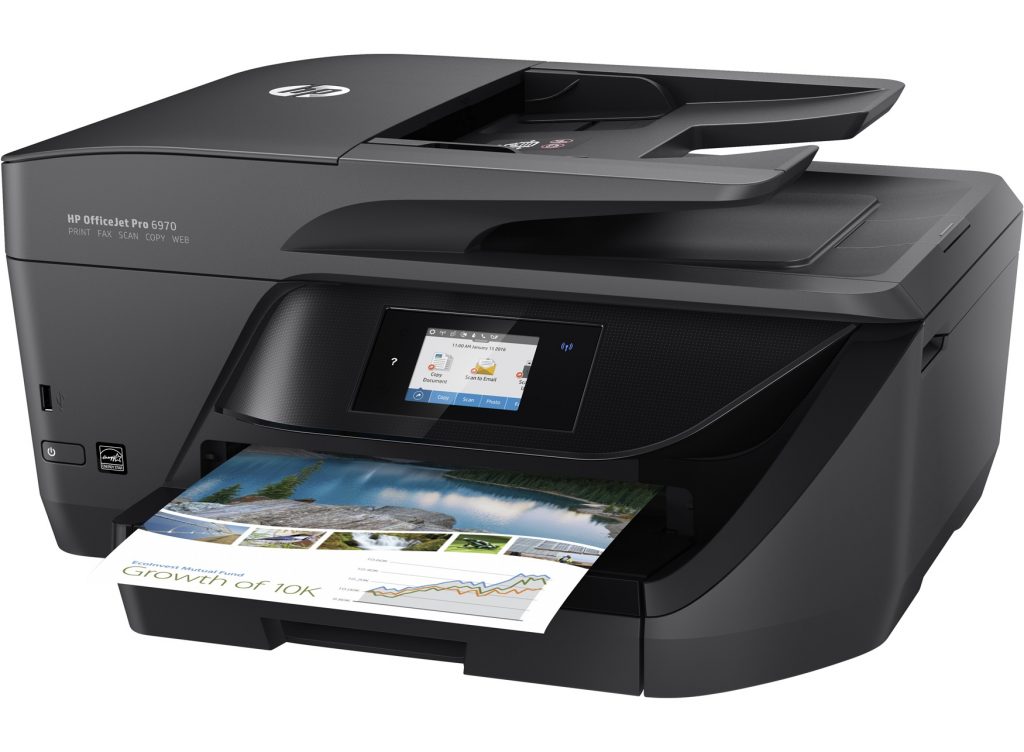Pull printing, which is often referred to using the eponym “FollowMe” or “follow-me” printing, is a way of implementing print servers, either on-premises or in the cloud, so that when a user prints something on their computer, the user’s print job is held on the print server until it is ready to be released by the user and printed on a print device (printer) found at a convenient location where the user can pick up the paper output from their print job. FollowMe printing was invented in Ringdale in 1997 as a form of print roaming technology. Several different vendors and OEMs of print devices offer various kinds of FollowMe printing solutions for companies ranging from SMEs to large enterprises. My friend and colleague Martin Urwaleck, who works in IT in Austria, knows all about the benefits that come from implementing FollowMe print technologies for organizations that use them. And he also knows about some of the things to watch out for when you plan on implementing a FollowMe type of printing solution in your environment. I asked him a few questions recently about his experience with this type of technology. I’m sharing his comments here to benefit TechGenix readers who may be considering deploying such a solution for their own company.

MITCH: I understand that you implemented a FollowMe printing solution for your previous employer. What was the printing situation there before FollowMe, and how did FollowMe improve things for them?
MARTIN: The situation before FollowMe was a high number of small- and medium-sized printers, both black-and-white and color. Everybody had to remember the printer names — automatic assignment was no option since we’re talking about 400-plus printers. With FollowMe, we introduced only two printer models — one black-and-white and one color. The color printer had finishing options (puncher and stapler), the black-and-white no options. Both models had scanners. Every room (about 60-70 people) got one black-and-white and one color printer as a rule (we had some exceptions, of course). Print queues were assigned with Group Policy since there were only two left — black-and-white and color (and the color printer defaulted to black-and-white). Every staff member had an access card, so we used it to identify the user for printing. Besides, we also offered Scan-To-Mail as a one-button solution for a simple scan, which was also heavily used (we had the UI customized since the printer supplier had this option). With that, we reduced the number of printers by 50 percent — despite complaints by users in the beginning. After about two months, the whining was over since everyone realized the benefits — and we reduced paper usage as the number of misprints was reduced as well.
MITCH: What’s the general procedure for implementing FollowMe as an enterprise printing solution? What kinds of steps are involved in implementing it as a solution?
MARTIN: I think it’s crucial to find a partner who can deliver support if needed — he has to know your local configuration, which is always highly customized. And you have to find a way to reduce the number of printer models as much as you can and choose compatible models — in my setup, I could print a black-and-white document on both the black-and-white and the color printer with the same printer driver. Clarify how you identify your users — maybe just a PIN is sufficient, maybe you have to issue tokens, etc.
MITCH: What’s it like on the user end with FollowMe? Does it make their work easier when they need to print something?
MARTIN: It depends — larger print jobs may take some time. But even small printers deliver 40-60 pages per minute, so this shouldn’t be an issue. And keep in mind that you always have the option to print direct in case of enterprise resource planning (ERP) systems, etc.
MITCH: Is FollowMe an expensive solution to implement? Are there many such enterprise printing solutions available in the marketplace?

MARTIN: All of the large vendors now have an offer for FollowMe printing, and there are several products on the market you can use to implement this on your own. When you use the right point-in-time (i.e., lifecycling your printers) to switch, you often end up with lower costs since you need fewer printers.
MITCH: I understand that when implementing FollowMe, it’s best if all your printers come from a single vendor. Why is that? What sort of things can happen if you have printers from different vendors and try to use FollowMe?
MARTIN: The issue is the drivers. For example, if you print through a Canon PCL6 emulation and deliver it on an HP printer, you can be pretty sure that you are running in trouble. Even if you decide to use a generic driver (e.g., PostScript), you are out of luck with features like duplex printing, punching, stapling, etc., as there’s no standard — you always use the printer default settings.
MITCH: Are there also considerations with FollowMe when all your printers are from the same vendor, but you have a mix of different models?
MARTIN: You have fewer constraints — if you have one vendor but different black-and-white models, you just have to take care that the printer you use for delivery has the necessary option (duplex, stapler, etc.). Same with color, same with the mix of black-and-white and color.
MITCH: Any other gotchas to be aware of when implementing or using FollowMe?
MARTIN: You’re producing a single point of failure for corporate-wide printing. Make sure you have reasonable support and knowledge for your solution!
MITCH: Good point! One final question: How did you decide upon the FollowMe vendor that you eventually used?
MARTIN: In my case here in Europe, we did a tender with about 10 companies, most of them nominated by the printer manufacturers we contacted. We finally went with the solution from Triumph-Adler (which is Ricoh) and found out later that their product was developed by a small vendor right here in Vienna, which made support a lot easier for us.
Featured image: Pixabay



